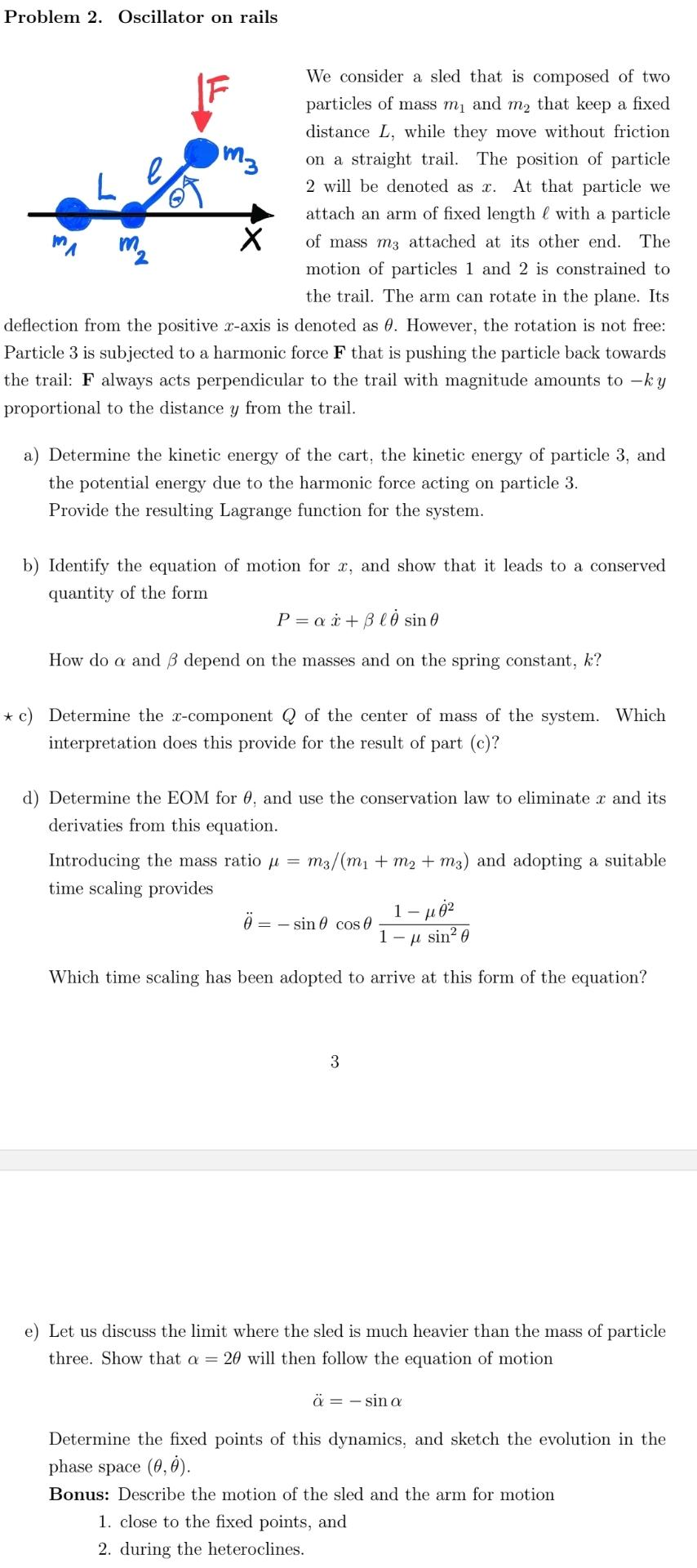Answered step by step
Verified Expert Solution
Question
1 Approved Answer
Problem 2. Oscillator on rails m 2 We consider a sled that is composed of two particles of mass m and m that keep

Problem 2. Oscillator on rails m 2 We consider a sled that is composed of two particles of mass m and m that keep a fixed distance L, while they move without friction on a straight trail. The position of particle 2 will be denoted as x. At that particle we attach an arm of fixed length with a particle of mass m3 attached at its other end. The motion of particles 1 and 2 is constrained to the trail. The arm can rotate in the plane. Its deflection from the positive x-axis is denoted as 0. However, the rotation is not free: Particle 3 is subjected to a harmonic force F that is pushing the particle back towards the trail: F always acts perpendicular to the trail with magnitude amounts to -ky proportional to the distance y from the trail. * a) Determine the kinetic energy of the cart, the kinetic energy of particle 3, and the potential energy due to the harmonic force acting on particle 3. Provide the resulting Lagrange function for the system. b) Identify the equation of motion for x, and show that it leads to a conserved quantity of the form Pax+le sin How do a and depend on the masses and on the spring constant, k? c) Determine the x-component Q of the center of mass of the system. Which interpretation does this provide for the result of part (c)? d) Determine the EOM for 0, and use the conservation law to eliminate derivaties from this equation. and its Introducing the mass ratio = m3/(m1 m2 m3) and adopting a suitable time scaling provides = = sin cos 0 1-sin0 Which time scaling has been adopted to arrive at this form of the equation? 3 e) Let us discuss the limit where the sled is much heavier than the mass of particle three. Show that a = 20 will then follow the equation of motion a = sin a Determine the fixed points of this dynamics, and sketch the evolution in the phase space (0,0). Bonus: Describe the motion of the sled and the arm for motion 1. close to the fixed points, and 2. during the heteroclines.
Step by Step Solution
There are 3 Steps involved in it
Step: 1

Get Instant Access to Expert-Tailored Solutions
See step-by-step solutions with expert insights and AI powered tools for academic success
Step: 2

Step: 3

Ace Your Homework with AI
Get the answers you need in no time with our AI-driven, step-by-step assistance
Get Started


